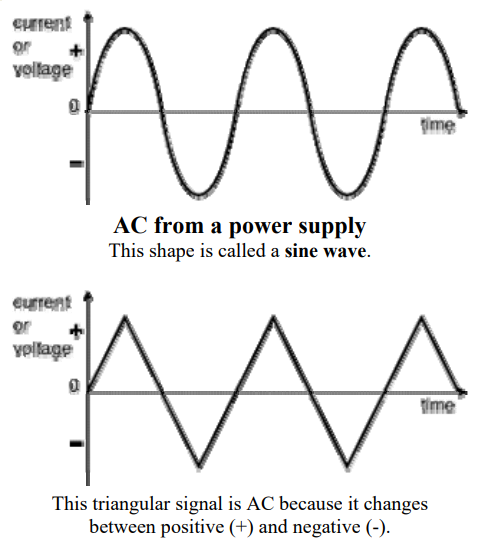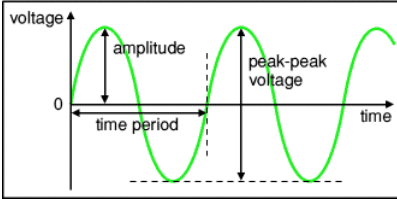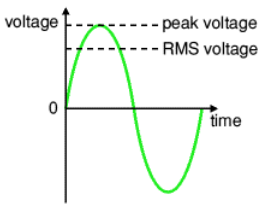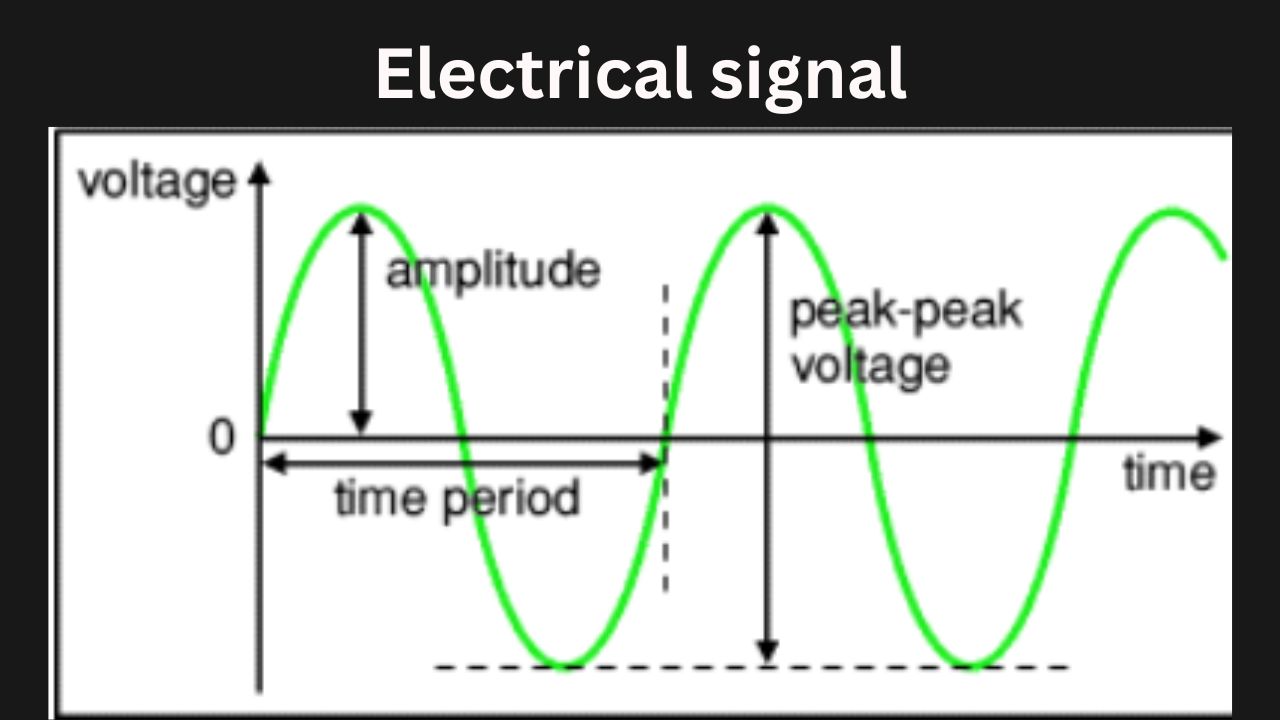If you have ever switched on a light, turned on a fan, or used an electronic gadget, you have interacted with electrical signals. These signals are the backbone of modern technology, powering everything from household appliances to space shuttles. But what exactly is an electrical signal, and how does it work? In this article, we will explore the basics of electrical signals and their applications.
The Power of Electrical Signals
Electricity is one of the most essential resources for modern society. It powers everything from the lights in your home to the servers that run the internet. But at its core, electricity is just the flow of electrons through a conductor. An electrical signal is a variation in the flow of these electrons that can be used to transmit information or perform a specific action.
The Components of an Electrical Signal
An electrical signal is composed of three basic components: voltage, current, and resistance.
Voltage
Voltage, also known as electric potential difference, is the measure of the electric potential energy per unit charge between two points in an electrical circuit. It is commonly represented by the symbol “V”.
The mathematical formula for voltage is V = IR, where V represents the voltage, I represents the current flowing through the circuit, and R represents the resistance of the circuit. This relationship is known as Ohm’s Law and is a fundamental concept in electrical engineering.
In practical terms, voltage is measured using a voltmeter, which is typically connected in parallel with the component or circuit being measured. The voltage measurement is expressed in volts (V) and is often used to calculate power and energy in electrical systems.
Voltage plays a crucial role in electrical circuits, as it determines the amount of current flowing through the circuit. Higher voltages result in greater current flow, while lower voltages result in less current flow. Additionally, voltage is used to control the behavior of electronic components, such as transistors and diodes, which are essential in modern electronics.
Current
Current, denoted by the symbol ‘I’, is a measure of the flow of electric charge in a circuit. It is defined as the rate of flow of charge through a cross-sectional area of a conductor, and its unit of measurement is the ampere (A). The mathematical formula for current is:
I = Q/t
Where I is the current in amperes, Q is the charge in coulombs, and t is the time in seconds.
Resistance
Resistance is the measure of how difficult it is for current to flow through a material. It is denoted by the symbol R and is measured in ohms (Ω). The resistance of a material depends on factors such as its length, cross-sectional area, and material properties such as resistivity. The relationship between voltage (V), current (I), and resistance (R) is given by Ohm’s law:
V = I * R
where V is the voltage, I is the current, and R is the resistance. This formula states that the voltage across a circuit is proportional to the current flowing through it, with the constant of proportionality being the resistance of the circuit. In other words, the greater the resistance of a circuit, the smaller the current will be for a given voltage.
Types of Electrical Signals
There are two main types of electrical signals: analog and digital.
AC and DC refer to two different types of electric current. AC stands for Alternating Current, which means the direction of the current changes periodically. On the other hand, DC stands for Direct Current, which means the current flows in only one direction. These terms are not limited to just electric currents but can also be used to refer to voltages and electrical signals.
For instance, a 12V AC power supply has an alternating voltage that will cause an alternating current to flow. An electrical signal refers to any voltage or current in a circuit that carries information, typically in the form of a voltage.
Analog Signals
Analog signals are continuous signals that can take on any value within a certain range. They are used for transmitting information that varies continuously over time, such as sound and images. Examples of analog signals include the sound from a speaker, the video signal from a camera, or the temperature reading from a thermometer.
Alternating Current (AC) is a type of electric current that flows back and forth in a circuit. It continuously changes direction, which means the voltage also alternates between positive (+) and negative (-) values.

The speed at which the AC current changes direction is called its frequency, and it is measured in hertz (Hz), which is the number of forward-backward cycles per second. In the UK, the mains electricity has a frequency of 50Hz.
AC is suitable for powering certain devices like lamps and heaters, but most electronic circuits require a steady Direct Current (DC) supply. A DC voltage remains constant in one direction, making it ideal for use in electronic circuits.
Digital Signals
Digital signals are discrete signals that can only take on specific values. They are used for transmitting information that can be represented as a series of numbers or binary digits (0 and 1). Examples of digital signals include computer data, cell phone signals, or digital audio signals.

Direct Current (DC) flows in only one direction and can increase or decrease in magnitude. A DC voltage is always either positive or negative, but it may also vary in value. Electronic circuits usually require a constant or smooth DC supply, which means the voltage remains constant at one value or has a small variation known as a ripple.
Cells, batteries, and regulated power supplies provide steady DC, making them ideal for use in electronic circuits. Power supplies have a transformer that converts the mains AC supply to a safe low-voltage AC. Then, the AC is converted to DC using a bridge rectifier, but the output is varying DC which is unsuitable for electronic circuits.
To obtain smooth DC, some power supplies incorporate a capacitor that removes the ripple, making it suitable for less-sensitive electronic circuits, including most projects on this website. Lamps, heaters, and motors can function with any DC supply.
Properties of electrical signals

An electrical signal is a type of voltage or current that carries information and can be used to describe any voltage or current in a circuit. Typically, the term refers to voltage, but it can also refer to current. The voltage-time graph represents various properties of an electrical signal, such as amplitude, wavelength, and period.
Additionally, frequency, which is the number of cycles per second, is also a property of electrical signals. The sine wave is commonly used to represent electrical signals, but the properties apply to any signal with a consistent shape.
- Amplitude: The maximum value of the signal’s voltage or current.
- Formula: Vmax or Imax
- Frequency: The number of times the signal repeats per second.
- Formula: f = 1/T, where f is the frequency and T is the period.
- Phase: The timing relationship between two signals.
- Formula: φ = 360° × (t / T), where φ is the phase angle, t is the time, and T is the period.
- Waveform: The shape of the signal over time.
- Formula: Depends on the type of waveform, such as sinusoidal, square, triangular, sawtooth, etc.
- Rise time: The time taken for the signal to rise from 10% to 90% of its maximum value.
- Formula: Tr = 0.35 / f × RC, where Tr is the rise time, f is the frequency, R is the resistance, and C is the capacitance.
- Fall time: The time taken for the signal to fall from 90% to 10% of its maximum value.
- Formula: Tf = 0.35 / f × RC, where Tf is the fall time, f is the frequency, R is the resistance, and C is the capacitance.
- Pulse width: The duration of time that the signal is high or low.
- Formula: PW = Ton + Toff, where PW is the pulse width, Ton is the time the signal is high, and Toff is the time the signal is low.
- Duty cycle: The percentage of time that the signal is high.
- Formula: DC = Ton / T × 100%, where DC is the duty cycle, Ton is the time the signal is high, and T is the period.
- Period: The time taken for one complete cycle of the signal.
- Formula: T = 1 / f, where T is the period and f is the frequency.
Root Mean Square (RMS) Values

The Root Mean Square (RMS) value of an electrical signal is a measure of its effective value, and it is used to describe the power of an AC signal. The RMS value is the square root of the mean of the squared instantaneous values of the signal. This means that the RMS value is equal to the DC voltage that would produce the same amount of power as the AC signal.
The mathematical formula for RMS value can be represented as:
RMS = sqrt((1/T)*∫(t1 to t2) v(t)^2 dt)
where RMS is the Root Mean Square value of the signal, T is the period of the signal, v(t) is the voltage at time t, and the integral is taken over one period of the signal.
The RMS value is useful for determining the power dissipated by a load when an AC signal is applied. The power dissipated is proportional to the RMS value of the voltage or current signal. For example, if a device operates at a voltage of 120 V AC and has a resistance of 10 Ω, the power it dissipates can be calculated using the RMS value of the voltage, which is approximately 84.85 V.
Applications of Electrical Signals
Electrical signals are used in a wide variety of applications, including:
Communication
Electrical signals are used to transmit information over long distances. They are used in everything from telephones and televisions to satellites and the Internet. Without electrical signals, long-distance communication would be impossible.
Control Systems
Electrical signals are used to control a wide variety of systems, from the temperature in your home to the flight systems in an airplane. They are used to regulate the flow of energy to various components and to ensure that everything is functioning correctly.
Medical Devices
Electrical signals are used in medical devices such as electrocardiograms (ECGs), electroencephalograms (EEGs), and pacemakers. These devices use electrical signals to monitor the electrical activity in the body and to regulate the heartbeat.
Power Generation
Electrical signals are used in power generation systems to control the flow of energy from generators to the electrical grid. They are also used in renewable energy systems such as solar panels and wind turbines to regulate the flow of energy from these sources.
Electrical Signal: Frequently Asked Questions (FAQs)
How do electrical signals work?
Electrical signals work by using variations in voltage, current, and resistance to transmit information or perform a specific action. They are used in a wide variety of applications, including communication, control systems, medical devices, and power generation.
What is the difference between analog and digital signals?
Analog signals are continuous signals that can take on any value within a certain range, while digital signals are discrete signals that can only take on specific values. Analog signals are used for transmitting information that varies continuously over time, such as sound and images, while digital signals are used for transmitting information that can be represented as a series of numbers or binary digits.
What are some examples of electrical signals?
Some examples of electrical signals include the sound from a speaker, the video signal from a camera, or the temperature reading from a thermometer. Electrical signals are also used in a wide variety of devices and systems, including telephones, televisions, satellites, computers, and medical devices.
What are some common uses of electrical signals?
Electrical signals are used in a wide variety of applications, including communication, control systems, medical devices, power generation, and renewable energy systems. They are essential for modern technology and are used in almost every aspect of our daily lives.
What are some of the benefits of using electrical signals?
Using electrical signals offers a number of benefits, including the ability to transmit information over long distances, the ability to control and regulate systems and devices, and the ability to generate and distribute power. Electrical signals also offer a high degree of accuracy and reliability, making them an essential component of modern technology.

